Set in a natural environment occupying approximately 243 acres, visitors can experience the natural atmosphere with over 260 traditional houses reminiscent of the late Joseon Dynasty, including various household goods from different regions. All these features have been relocated and restored to provide visitors with a broad understanding of Korean food, clothing, and housing style of the past.
About twenty workshops, various handicrafts such as pottery, baskets, winnows, bamboo wares, wooden wares, paper, brass wares, knots, fans, musical instruments, iron wares and embroidery are practiced. In the Korean Folk Village, where the customs and lifestyles of the past generations have been carefully preserved, various lifestyles prevalent during the Joseon Dynasty can be seen.
You can visit the Folk Museum as well as the Art Museum (scheduled to open) to see and learn about the essence of Korean culture and folk customs, which are not suitable for display and re-creating in the open-air setting. Korean Folk Village is also the filming location for the famous movie Scandal as well as the TV miniseries Daejanggeum.
Life and Culture ExperienceFolk culture in all seasons and various traditional experiences await visitors.
Horseback Riding Experience
Visitors can try a ride on the horses that belong to the stately Equestrian Feats Group of KFV.
Korean Archery Experience
The special experience of martial arts provides an opportunity to try bow shooting in natural settings as well as an understanding of the Korean archery technique.
Traditional Dyeing Experience
A participant uses such natural materials as gardenia seeds and sappan wood to put subtle color on a handkerchief.
Traditional Life Experience
Visitors can tour KFV, experiencing various aspects of everyday life in farm houses.
Craft Workshop Experience
Bamboo Ware Workshop
Visitors can meet various bamboo ware exuding an artisan’s tact including items for daily life such as sewing box, Dutch wife, and basket as well as furniture, stationery, and playthings.
Wooden Craft Experience
Demonstrating the beauty and style of wood, the wooden utensils workshop allows a visitor to witness the making of items in daily life such as hongdukae (wooden cloth roller), soban (small portable dining table), and laundry bats.
Pottery Workshop Experience
A visitor can witness and experience the making of pottery, a living proof of ancestors’ wisdom. The products from the earthenware workshop practices the traditional method in glazing and carefully firing earthenware. (Experience making earthenware)
Hand Fan Workshop
He traditional fan from KFV is round-shaped banggu buchae, which is made with such traditional materials as wood and hanji. Here,visitors can experience making fans that exude ancestors’ style and taste. (Experience fan making)
Lacquer Ware Workshop
Manufacturing high quality brass tableware, the bronze workshop is a pride of KFV. The bronze spoon set from the workshop produced with artisans’ sweats and passion are popular with visiting foreigners. (Demonstration in bronze craft)
Blacksmith's Workshop
KFV blacksmith’s workshop manufactures farming tools and other appliances used in daily life in the traditional method. Visitors can watch how pig iron is wrought into iron tools and purchase products. (Demonstration of manufacturing of iron tools)
Pyrography Workshop
At the pyrography workshop, visitors can appreciate the process of drawing or writing on wood or paper with hot instruments as well as various pyrography. (Demonstration of pyrography)
Traditional Mask Workshop
He workshop presents wooden mask craft, which consists in carving paulownia and alder with a knife. A visitor can feel the touch of an artisan who renders with subtle carving the various characteristics of a human. (Demonstration of mask carving craft)
Traditional Dyeing Workshop
The workshop uses water boiled with gardenia seeds and sappan wood in it to color cotton. Especially the ‘experience of naturally dyeing handkerchief’remains a popular program available from the dyeing workshop.(Experience of naturally dyeing handkerchief)
Musical Instrument Workshop
Visitors can learn how to make and play danso (short bamboo flute) and how to play mulpiri (water flute) from an artisan of the workshop, a master player of daegeum (large flute). (Experience danso making etc.)
Tobacco Pipe Workshop
KFV tobacco pipe workshop uses nickel plated brass to solder it to bamboo. The artisan who came from Namwon, famous for tobacco pipes, has manufactured tobacco pipes for over sixty years. (Demonstrating the making of tobacco pipe)
Straw Shoes Workshop
The place reproduces the process of making straw shoes by plaiting straws skillfully. Visitors can meet here an artisan who twists straws in the traditional method to make straw shoes. (Demonstration of the making of straw shoes / experience of getting into straw shoes)
| Directions |
|
[Subway + Bus]
1) Take bus from either Gangnam Station (Seoul Subway Line 2), Exit 10 or Sinnonhyeon Station (DX Subway Line), Exit 6.
Take Bus 5001-1 or 1560 to Korean Folk Village.
*5001-1 (Red express bus)
Boarding location: From Exit 6 of Sinnonhyeon Station, go straight 250m and you will find the stop across from the CGV.
Route: Sinnonhyeon Subway Station → Gangnam Subway Station → Yangjae Subway Station → Yangjae IC → Suwon IC → Singal → KFV → Myongji University.
*1560 (Red express bus)
Location: From Exit 6 of Sinnonhyeon Station, go straight 250m and you will find the stop across from the CGV.
Route: Sinnonhyeon Subway Station → Gangnam Subway Station → Yangjae Subway Station → Gyeongbu Expressway → Singal → KFV 3-Way Intersection (Samsung Apt.) → Samsung Semiconductor → Byeongjeom
2) Get off at Jonggak Station (Seoul Subway Line 1), Exit 3. Upon exiting, take Bus 5500-1 to Korean Folk Village 3-way Junction.
*5500-1 (Red express bus)
Location: From Exit 3 of Jonggak Subway Station, go straight 200m to Tapgol Park Route: Jonggak Subway Station → Dankook University → Seohyeon Subway Station → Migeum Subway Station → Singal → Bora Elementary School→ KFV 3-Way Intersection (Samsung Apt.) → Kyunghee University
3) Take Bus 10-5 or 37 to Korean Folk Village or Nagok Village from Suwon Station (Seoul Subway Line 1), Exit 5.
*10-5
Location: From Exit 5 of Suwon Station, go forward 50m.
Route: Suwon Station → Gyeonggi-do Provincial Office → 2001 Outlet → Suwon Employment Center → Wooman Apt → Ajou University 3-Way Intersection → Premium Outlet Sanggal Station → Geumhwa Village 3rd Compound → KFV 3-Way Intersection → Hanbora Village Entrance → Get off for Nagok Village
*37
Location: From Exit 5 of Suwon Station, go forward 50m.
Route: Suwon Station → Gyeonggi-do Provincial Office → 2001 Outlet → Dongsuwon Telephone Office → Court 3-Way Intersection → Sanggal Station → Geumhwa → KFV 3-Way Intersection → Get off for KFV
4) Take Bus 37, 10-5 or 5001-1 to Korean Folk Village or Nagok Village from Sanggal Station (Bundang Subway Line), Exit 3.
[Shuttle Bus 1] (Korean Folk Village ↔ Suwon Station)
*Operating hours
Suwon Station → Korean Folk Village: 10:30, 12:30, 14:30
Korean Folk Village → Suwon Station: 14:00, 15:30, 16:30
*Fair: Free of charge.
*Group passengers require reservation in advance.
*Tickets must be purchased prior to boarding. Inquires regarding ticket purchase will be answered at the tourist information center.
[Shuttle Bus 2] (Korean Folk Village ↔ Sanggal Station)
Korean Folk Village (Main gate): 11:00, 13:00, 15:00, 16:30, 17:30
Sanggal Station, Exit 2: 11:05, 13:05, 15:05, 16:35, 17:35
Gyeonggi Provincial Museum: 11:10, 13:10, 15:10, 16:40, 17:40
Giheung Station: 11:20, 13:20, 15:20, 16:50, 17:45
Sanggal Station, Exit 3: 11:25, 13:25, 15:25, 16:55
Korean Folk Village (Main gate): 11:30, 13:30, 15:30, 17:00
※Tourist information center is located 50m from Suwon Station, Exit 5.
※The last shuttle bus will not operate during winter season.
※Inquires: +82-31-256-6031 (Korean Folk Village Shuttle Bus Service ) |
sources:
Posted by New Yen Sin(A13A0589)
|

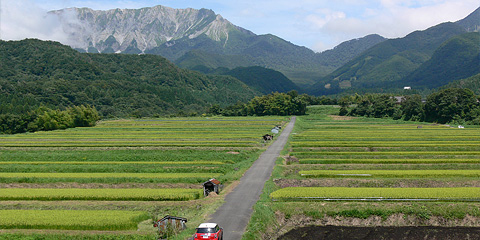
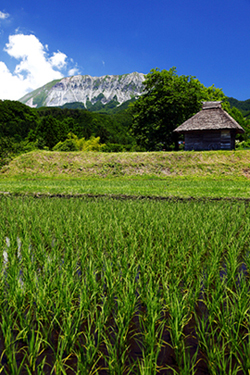
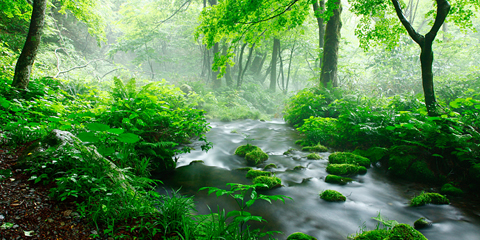
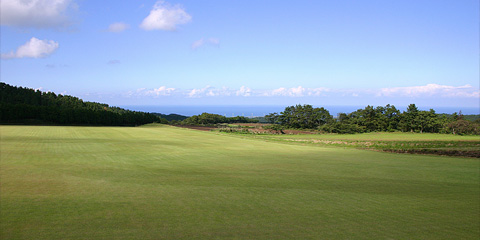
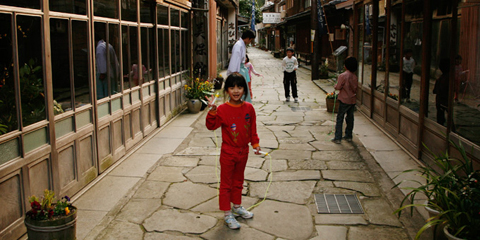
















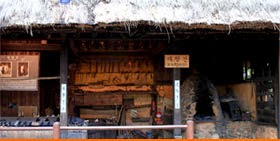












.jpg)


